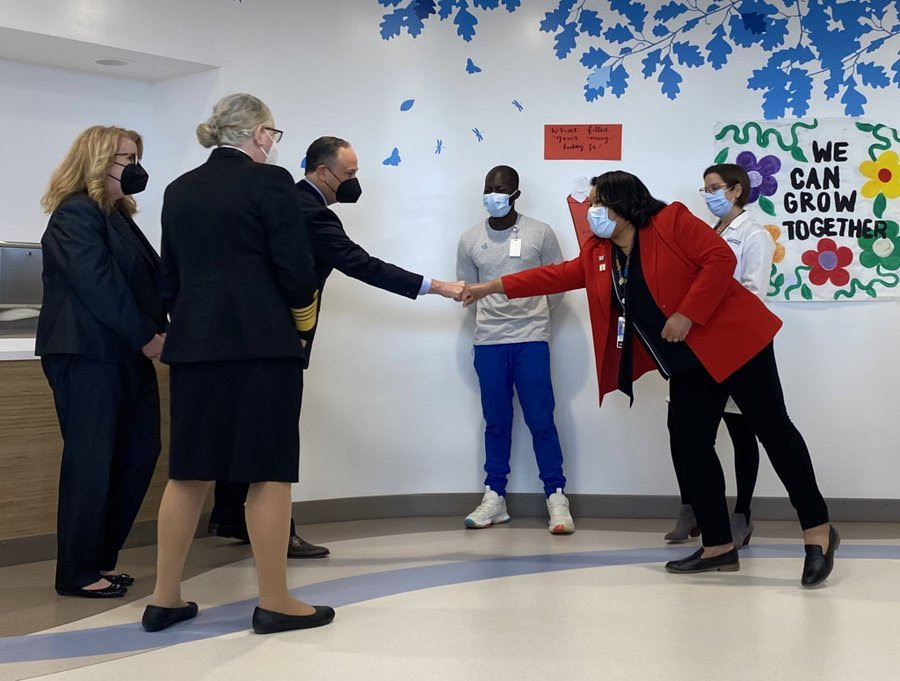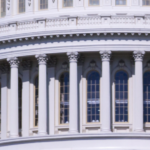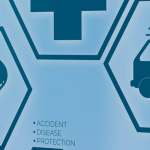Committee on Ways and Means
U.S. House of Representatives Hearing on “America’s Mental Health Crisis”
Statement of Shawn Baird, President, American Ambulance Association
February 2, 2022
Chairman Neal, Ranking Member Brady, and members of the Committee, on behalf of the members of the American Ambulance Association (AAA), I greatly appreciate the opportunity to provide you with a written statement on America’s Mental Health Crisis. Simply put, America’s hometown heroes who provide emergency medical services and transitional care need the Congress to recognize the significant stress and trauma paramedics and emergency medical technicians (EMTs) have experienced as a result of this pandemic. The AAA urges members of Congress not to forget these heroes and to expressly include all ground ambulance service personnel in efforts to address America’s Mental Health Crisis.
Emergency medical services (EMS) professionals are ready at a moment’s notice to provide life-saving and life-sustaining treatment and medical transportation for conditions ranging from heart attack, stroke, and trauma to childbirth and overdose. These first responders proudly serve their communities with on-demand mobile healthcare around the clock. Ground ambulance service professionals have been at the forefront of our country’s response to the mental health crisis in their local communities. Often, emergency calls related to mental health services are triaged to the local ground ambulance service to address.
While paramedics and EMTs provide important emergency health care services to those individuals suffering from a mental or behavioral health crisis, these front-line workers have been struggling to access the federal assistance they need to address the mental health strain that providing 24-hour care, especially during a COVID-19 pandemic, has placed on them. We need to ensure that there is equal access to mental health funding for all EMS agencies, regardless of their form of corporate ownership so that all first responders can receive the help and support they need.
EMS’s Enhanced Role in the Pandemic
As if traditional ambulance service responsibilities were not enough, paramedics and EMTs have taken on an even greater role on the very front lines of the COVID-19 pandemic. In many areas, EMS professionals lead Coronavirus vaccination, testing, and patient navigation. As part of the federal disaster response subcontract, EMS personnel even deploy to other areas around the country to pandemic hotspots and natural disasters to bolster local healthcare resources in the face of extraordinarily challenging circumstances.
Mental & Behavioral Health Challenges Drive Staffing Shortages on the Front Line
Myriad studies show that first responders face much higher-than-average rates of post- traumatic stress disorder[1], burnout[2], and suicidal ideation[3]. These selfless professionals work in the field every day at great risk to their personal health and safety—and under extreme stress.
Ambulance service agencies and fire departments do not keep bankers’ hours. By their very nature, EMS operations do not close during pandemic lockdowns or during extreme weather emergencies. “Working from home” is not an option for paramedics and EMTs who serve at the intersection of public health and public safety. Many communities face a greater than 25% annual turnover[4] of EMS staff because of these factors. In fact, across the nation EMS agencies face a 20% staffing shortage compounded by near 20% of employees on sick leave from COVID-19. This crisis-level staffing is unsustainable and threatens the public safety net of our cities and towns.
Sadly, to date, too few resources have been allocated to support the mental and behavioral health of our hometown heroes. I write today to ask for Congressional assistance to help the helpers as they face the challenges of 2022 and beyond.
Equity for All Provider Types
Due to the inherently local nature of EMS, each American community chooses the ambulance service provider model that represents the best fit for its specific population, geography, and budget. From for-profit entities to municipally-funded fire departments to volunteer rescue squads, EMS professionals share the same duties and responsibilities regardless of their organizational tax structure. They face the same mental health challenges and should have equal access to available behavioral health programs and services.
Many current federal first responder grant programs and resources exclude the tens of thousands of paramedics and EMTs employed by for-profit entities from access. These individuals respond to the same 911 calls and provide the same interfacility mobile healthcare as their governmental brethren without receiving the same behavioral health support from
Federal agencies. To remedy this and ensure equitable mental healthcare access for all first responders, we recommend that:
- During the current public health emergency and for at least two years thereafter, eligibility for first responder training and staffing grant programs administered by the U.S. Department of Health and Human Services (such as SAMHSA Rural EMS Training Grants and HHS Occupational Safety and Health Training Project Grants) should be expanded to include for-profit entities. Spending on training and services for mental health should also be included as eligible program
- Congress should authorize the establishment of a new HHS grant program open to public and private nonprofit and for-profit ambulance service providers to fund paramedic and EMT recruitment and training, including employee education and peer-support programming to reduce and prevent suicide, burnout, mental health conditions and substance use
- Any initiatives to fund hero pay or death benefits for first responders should be inclusive of all provider models—for-profit, non-profit, and
The rationale for the above requests is twofold. First, ensuring the mental health and wellness of all EMS professionals—regardless of their employer’s tax status—is the right thing to do.
Second, because keeping paramedics and EMTs employed by private ambulance agencies who are on the frontlines of providing vital medical care and vaccinations during this pandemic is the smart thing to do.
Thank you for considering this request to support ALL of our nation’s frontline heroes. They are ready to answer your call for help, 24/7—two years into this devastating pandemic, will Congress answer theirs?
Please do not hesitate to contact American Ambulance Association Senior Vice President of Government Affairs, Tristan North, at tnorth@ambulance.org or 202-486-4888 should you have any questions.
- Prevalence of PTSD and common mental disorders amongst ambulance personnel: A systematic review and meta-analysis. Soc Psychiatry Psychiatr 2018;53(9):897-909.
- ALmutairi MN, El Mahalli AA. Burnout and Coping Methods among Emergency Medical Services Professionals. J Multidiscip Healthc. 2020;13:271-279. Published 2020 Mar 16. doi:10.2147/JMDH.S244303
- Stanley, I. H., Hom, M. A., & Joiner, T. E. (2016). A systematic review of suicidal thoughts and behaviors among police officers, firefighters, EMTs, and Clinical Psychology Review, 44, 25–44. https://doi.org/10.1016/j. cpr.2015.12.002
- Doverspike D, Moore S. 2021 Ambulance Industry Employee Turnover Study. 3rd Washington, DC: American Ambulance Association; 2021.












 In his State of the Union address, President Biden announced an ambitious strategy to address our national mental health crisis. At the Health Resources and Services Administration, we stand with the President in his call for unity in our national response and know that for the millions of Americans living with a mental health condition or caring for a loved one with a mental health condition, the time for action is now.
In his State of the Union address, President Biden announced an ambitious strategy to address our national mental health crisis. At the Health Resources and Services Administration, we stand with the President in his call for unity in our national response and know that for the millions of Americans living with a mental health condition or caring for a loved one with a mental health condition, the time for action is now. In February, HRSA announced the winners of the Promoting Pediatric Primary Prevention Challenge, $66.5 million to support community-based vaccine outreach efforts, more than $560 million in pandemic relief payments to health care providers, funding to increase virtual care quality and access, and new funding to support primary care residency programs.
In February, HRSA announced the winners of the Promoting Pediatric Primary Prevention Challenge, $66.5 million to support community-based vaccine outreach efforts, more than $560 million in pandemic relief payments to health care providers, funding to increase virtual care quality and access, and new funding to support primary care residency programs.
 With this funding, nearly $19 billion will have been distributed from the Provider Relief Fund and the American Rescue Plan Rural provider funding since November 2021
With this funding, nearly $19 billion will have been distributed from the Provider Relief Fund and the American Rescue Plan Rural provider funding since November 2021
 Our
Our  A
A  Climate change influences human health and diseases in numerous ways. Underserved communities stand to bear the brunt of these climate-induced risks (e.g., extreme heat, poor air quality, flooding, extreme weather events). HRSA and CDC’s Climate and Health Program invite you to consider the impacts of climate change on the U.S. health care system. CDC will share its work to build resilience to these public health effects.
Climate change influences human health and diseases in numerous ways. Underserved communities stand to bear the brunt of these climate-induced risks (e.g., extreme heat, poor air quality, flooding, extreme weather events). HRSA and CDC’s Climate and Health Program invite you to consider the impacts of climate change on the U.S. health care system. CDC will share its work to build resilience to these public health effects.
 Children’s mental health continues to be a top priority for state leaders across both legislative and executive branches of state government. With COVID-19 exacerbating the challenges children are facing, there is much more work to be done.
Children’s mental health continues to be a top priority for state leaders across both legislative and executive branches of state government. With COVID-19 exacerbating the challenges children are facing, there is much more work to be done.











